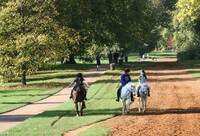- England
- Scotland
- France
- Holland
- Germany
- Italy
- Spain
- Portugal
- USA
- China
- Japan
- India
- Iran
- Advice
- Gardens
- England
- Scotland
- France
- Holland
- Germany
- Italy
- Spain
- Portugal
- USA
- China
- Japan
- India
- Iran
- Advice
- Garden Tours
Book: Landscape Planning and Environmental Impact Design: from EIA to EID
Chapter: Chapter 10 Sustainable green transport
Roads were made for horses. Le Corbusier, a pioneer of modernist planning, derided wobbly old paths as 'the way of the pack-donkey': The pack-donkey meanders along, meditates a little in his scatter-brained and distracted fashion, he zigzags in order to avoid the larger stones, or to ease the climb, or to gain a little shade; he takes the line of least resistance. But man governs his feelings by his reason.... The Pack-Donkey's Way is responsible for the plan of every continental city; including Paris, unfortunately (Corbusier 1977 edn.: 11). Corbusier was right to see the horse as a major historical influence upon road alignment [Fig 10.12]. He was wrong to criticise the beast of burden for meditation, wrong to lament the influence of horse transport upon cities, and wrong to see the age of horse transport as having ended. Britain is said to have had more horses in the 1990s than it did in the 1890s, because of the rise in population and in leisure expenditure. Yet horses have been unfairly displaced from their historic routes by motor vehicles. Surviving bridleways are overused and unpleasant, with sharp branches overhead and deep mud underhoof [Fig 10.13]. The solution is to plan a revitalised network of bridleways. This is particularly important in towns, where most people now live. Parkways, linking parks, should incorporate bridleways. In areas with large populations of horse-owners, there could be stables and paddocks near railway stations. This would allow some people to ride to and from stations. The high cost of the service would be borne by horse-owners and could well be less than the cost of keeping a second car for driving to and from the railway station, as so many people do. On reaching their offices, horse riders could use the same changing facilities as cyclists.

